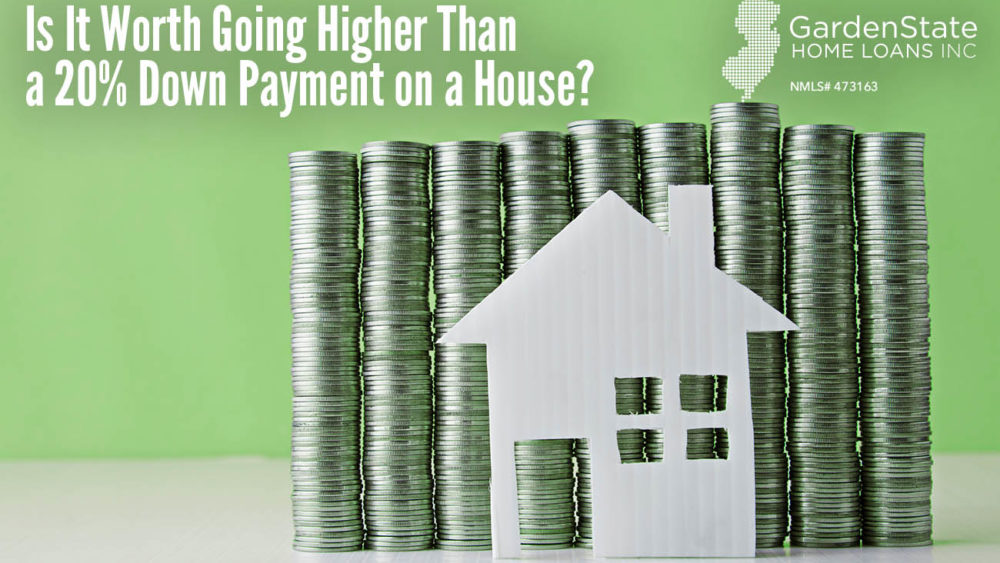
One of the most difficult challenges facing a first time homebuyer is deciding how much to put down at closing. A down payment is the amount of cash that the buyer puts towards the purchase of his or her home, typically defined as a percentage of the home’s value, with the rest of the cost covered by the mortgage.
By convention, homebuyers are advised to aim for a 20% down payment, but recently lower down payment loans— 10%, 1%, or even 0% down — have become increasingly popular. These low down payment loans are risky for lenders, however, and will cost buyers significantly more in the long run. Not only will interest rates be higher on these loans, but also will mortgage insurance be mandatory. For most people, a 20% down payment should still be their target when purchasing a home.
But if down payments lower than 20% result in higher interest rates and greater costs over time, what do down payments greater than 20% result in? Should a buyer aim to put 25%, 30%, or even 40% down? Well, that’s where things begin to get tricky.
The Advantages of a Higher Down Payment
There’s no doubt that putting down greater than 20% will get a homebuyer a lower monthly mortgage payment. A large down payment lowers the overall risk to the lender of financing the home, and so they will reward the customer with a better rate. At first, a difference of, say, a quarter of a percentage point may seem pretty insignificant, but, over the long term— the duration of 15, 20, or 30 years— that lower interest rate could save a borrower tens of thousands of dollars – extra money that can go towards home improvements, vacations, and retirement savings, among other things.
There’s also another major benefit to putting greater than 20% down: a larger down payment— say, 30%— will allow a buyer to afford more financing with the same monthly payment that a buyer would have had with less money down — for example 15%. See the table below:
| Buyer | Monthly Payment | % Down | $ Down | Rate | Loan Amount | Home Price |
| A | $985 | 5% | $10,542 | 4.250% | $200,300 | $210,842 |
| B | $985 | 10% | $22,600 | 4.125% | $203,400 | $226,000 |
| C | $985 | 20% | $52,400 | 3.875% | $209,600 | $262,000 |
| D | $985 | 25% | $70,933 | 3.750% | $212,800 | $283,733 |
Putting 25% down instead of only 10% allows you to afford a house that costs $57,733 more. That’s a significant difference that could allow one to live in a larger home, or even perhaps a better neighborhood. A larger down payment also allows the homebuyer to instantly build equity on the home, which could take years to create otherwise.
But are these benefits worth it? On the surface they sound great— a lower interest rate, the ability to afford a larger home in a nicer neighborhood, instant equity— but there may be better ways to spend one’s savings than on a larger down payment.
The Cons of Higher Down Payments
If you’re a prospective homebuyer, it’s important not to make decisions in a vacuum. Being able to afford a larger home at the same monthly payment is great, but if you have large amounts of student debt, then you’re likely better off with a lower down payment, using your existing savings to pay down your student debt. Opting for a larger down payment could deplete your savings and leave you without an emergency fund, putting yourself at greater risk of defaulting later on.
Opportunity Cost
These concerns may seem obvious: if you have a ton of student loans or significant credit card debt, you know exactly how much you could save by paying that debt down now, instead of splurging on a 30% down payment. But there’s another factor to consider when making a down payment decision that could cost borrowers more than they would ever believe: opportunity cost. Opportunity cost is the foregone value of the best alternative use of one’s assets. So, if you’re the homebuyer, and you decide to put 30% down on a $250,000 house, instead of 20%, then you’re spending $25,000 more ($75,000 down versus $50,000 down) at the time of purchase. Imagine if you put that $25,000 in the stock market today. At a modest 6% annual return (the average annual rate of return over the last several decades is 7%), that initial $25,000 investment would equal almost $144,000 at the end of a 30 year period. Barring either an abnormally large drop in the value of the dollar— a drop that would outpace the typical rate of inflation— or a massive rise in real, inflation-adjusted home values, it’s unlikely that you would ever get a similar return on your home. Homes aren’t investments; they’re residences.
Ultimately, deciding whether or not it is worth it to put down a payment greater than 20% is a personal decision — it will vary from borrower to borrower. If a homebuyer has the means to afford a large down payment and is risk-averse, then he’ll probably feel more comfortable putting more than 20% down. But if a borrower would rather find an alternative use for their savings or is concerned about their existing debt, then a 20% down option may work better. After all, a borrower may find the interest rate that comes with a 20% down payment to be pretty favorable anyway. There’s no one-size-fits-all answer, but each borrower should be sure to explore all options prior to making a decision.



Comments are closed.